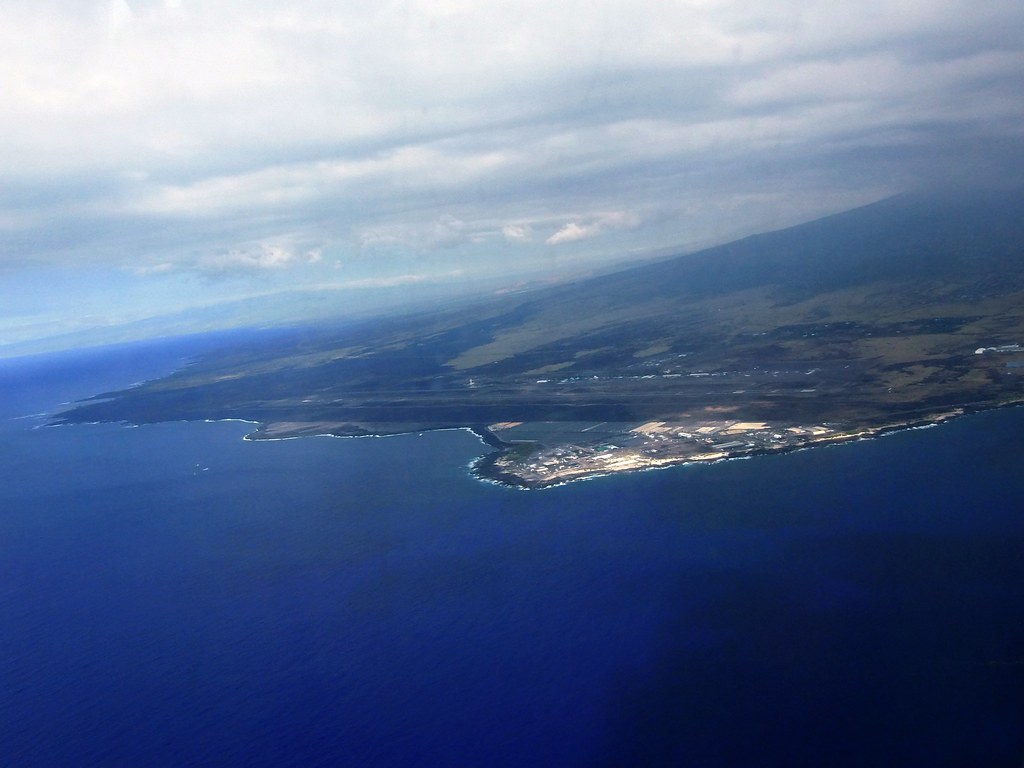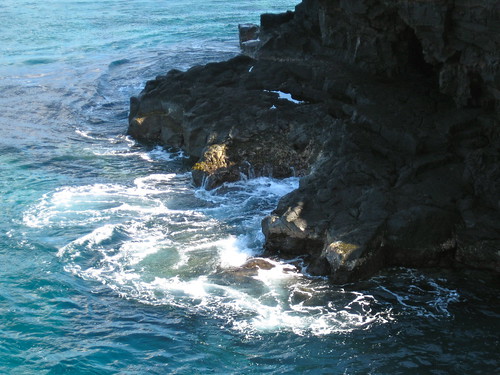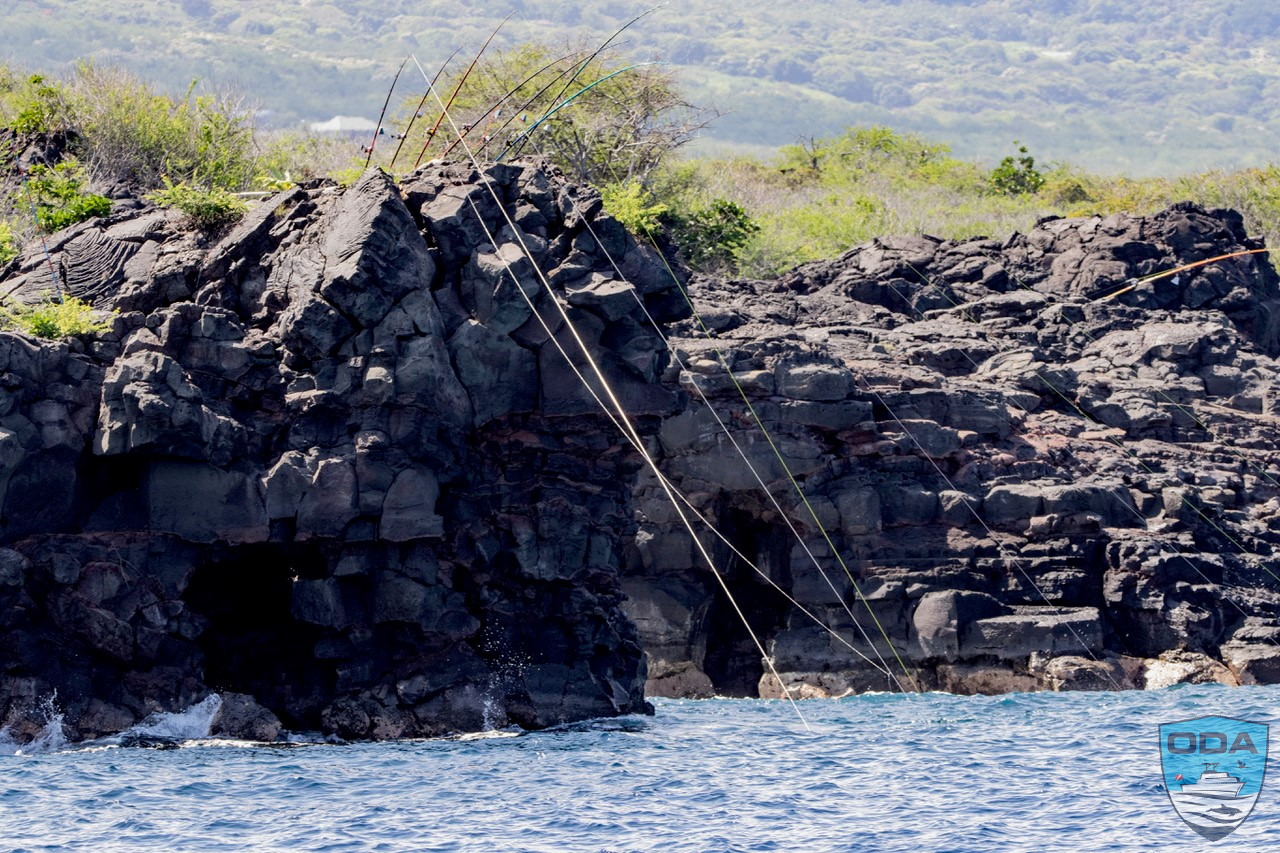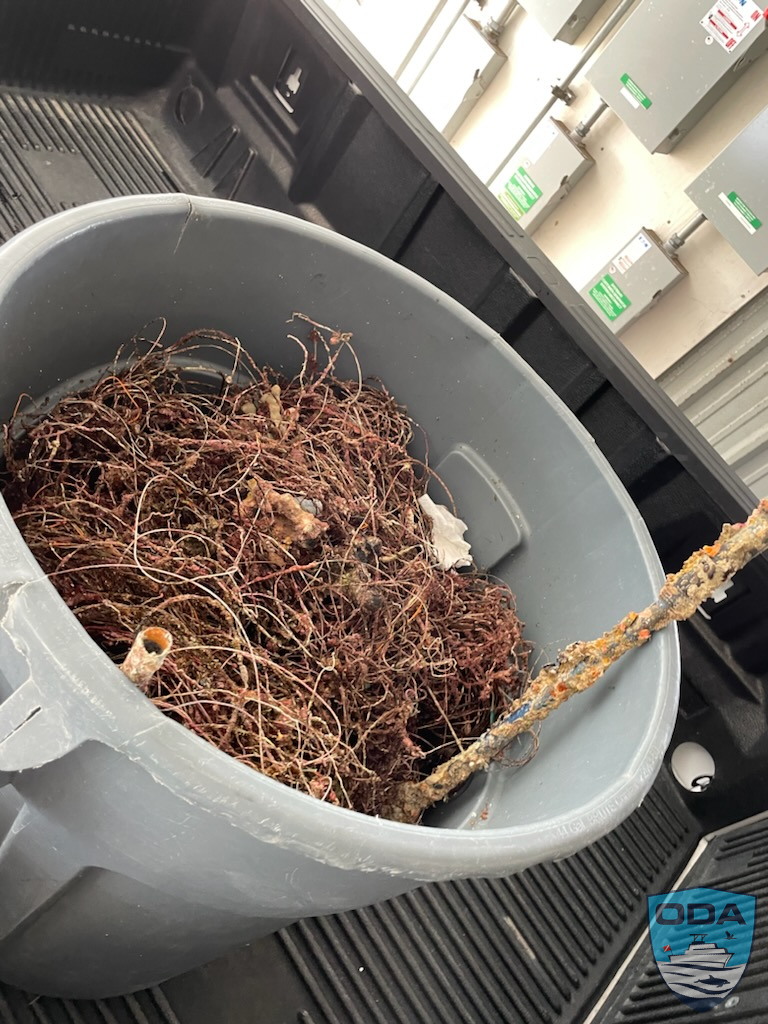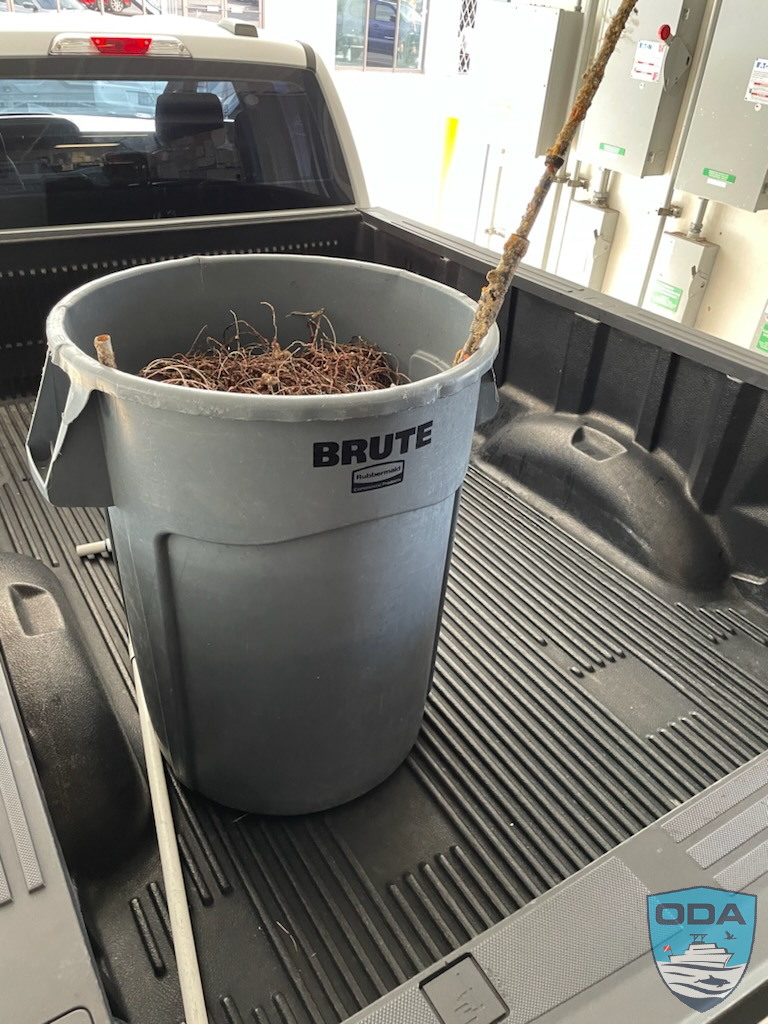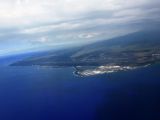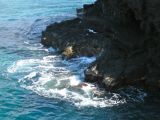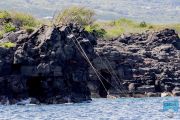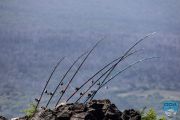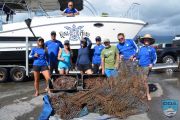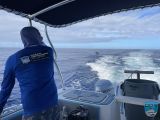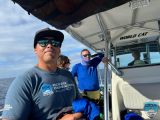By ODA Hawai’i Island Chapter Leader Sarah Milisen
Just to the north of Puʻuhonua o Hōnaunau National historical park, on the southwest side of Hawai'i Island, sits rugged cliffs and steep underwater drop-offs.
There are no moorings for divers to enjoy the underwater world in this area, but occasionally dive operators drift dive (live boats drop off and pick up divers at the surface) and this is how we initially came across a devastating area known to the divers as "Deep Step."
Deep Step is currently, and has been, a fishing spot for locals. A scouting mission earlier this year in July happened to be on a weekend when over a dozen lines were simultaneously draped over the edge of the cliff into the water, making entry into this area impossible.
In August, Kona Honu Divers (KHD) offered their smaller boat for a special-forces-esque mission to get down there and assess/clean up what we could. Six cleanup divers and a photographer went down to capture the devastation, and we furiously cleaned what we could.

A couple weeks ago, (on December 11th), we launched this -- our second -- covert mission with dive professionals and an underwater videographer to capture the full cinematic experience to showcase the destruction.
Our crew on this day was: Tom Boyd (underwater video), Juan Chacin, Erin Clement (underwater video), Kay Cooper, Jacques Delorme, Sarah Milisen and Elias Roberts.
Tom Boyd, our videographer and volunteer diver for this excursion, dropped down prior to the cleanup crew to record the reef as it was. He came up overwhelmed. There were so many areas to show, so much to record: long, entangled lines falling into the abyss, a weave-work of fishing line, lures, weights, and rigging that intertwined like netting draping the reef, he was shooting so constantly, his camera wound up overheating – a problem he never usually has when in the water. He wanted to show everything, but it was in every direction – an impossible task.
Be sure to enlarge the video (after you click "play," you can click the little white box in the lower right corner of the video):
Then, the dive team deployed, and we got to work. Most of the divers were returnees, having cleaned up on our first mission. However, this was Elias Roberts' first experience underwater at Deep Step. He had never seen a dive site so wiped out with fishing line before. We started our cleanup as deep as we could go with our allowable Enriched Air blends, and worked our way up, focusing on teamwork and cutting/rolling up balls of fishing line into our large mesh bags. Once our tanks ran low, we jumped into the boat, swapped over onto fresh tanks, and got back to it.
In Erin's video -- which was shot closer to the surface than Tom's -- you can see the uncommon multi-colored, braided, cotten fishing line. And she also got footage of some colorful fish...poor things have to navigate around all this line:
Our team of six cleanup divers completed two dives each, and we estimated that we collected approximately 18,000 feet of fishing line. With lead, line, and tackle, our 44-gallon trash bin was over 250 pounds. All the line compressed into tighter and tighter piles into the large trash bin as we added bag after bag of collected line, which unfortunately made our efforts look a bit underwhelming.
On our boat ride back to the harbor, some of the divers commented that their August cleanup efforts just felt like we had not made any kind of difference due to the enormity of the line they had all witnessed. Perhaps heading to a familiar dive site, mentally braced for expectations, or perhaps a glimmer of hope, but Kay and Erin both felt that we may have made progress on this recent mission. "The shallower area, where we were able to focus more time, almost looks somewhat normal," Erin noted.
But deeper than 60fsw (“feet of sea water”, measurement of units of pressure) definitely still has a lot of work to do. Our Enriched Air tanks allowed us to a maximum depth of 110fsw – beyond that, we haven't been able to even touch that area. It's still blanketed with line and lead.
Here's our stuffed can full of hauled-out fishing line:
An overwhelming amount of fishing line is still down there, ensnaring the reef, bunching up on coral heads, and lead is leaching out into the ocean waters. We will plan another trip back – but is there a way to perhaps promote more sustainable fishing practices? Would Hawai'i allow for laws or enforcement to make these destructive fishing methods illegal? Making this destruction known might show that fishing pressure can do a lot of damage to the reefs, which will greatly impact the fish that will want to make that area home in the future, as well. In the meantime, as these practices continue, Ocean Defenders will still be out there, trying our best to clean it up for the fish, marine life, and protected species we all love.
Check out my previous story about our first cleanup at this ghost-gear-ridden site, with AMAZING photos from the incredibly talented professional photographer Renee Capozzola.


